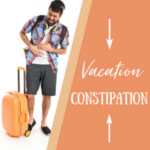The fact is everyone needs some salt in their diet to function. Salt, also known as sodium chloride, is essential for proper nerve and muscle function as well as balancing fluids in the body.
And while some people, athletes in particular, are at risk for being too low in sodium, most people will benefit from watching their sodium intake.
Not only does a lower sodium intake help manage blood pressure, reduce the risk of heart disease, stroke, and kidney failure, it can also help decrease fluid retention and puffiness.
How much is too much?
Here is a summary of the daily recommendations from major health organizations:
- United States Department of Agriculture (USDA): 2300 mg
- American Heart Association (AHA): 1500 mg (2)
- Academy of Nutrition and Dietetics (AND): 1500 to 2300 mg
- American Diabetes Association (ADA): 1500 to 2300 mg
The bottom line is, there is an agreement that the optimal limit is 1500 mg, but allowing up to 2300 mg of sodium is easier to achieve. 1 teaspoon of salt has 2300 mg of sodium.
Over the years we have seen an increase in awareness on this topic and a decrease in the salt added at the dinner table. People are opting for lower sodium, salt free seasonings, low sodium soups, and trying to eat more fresh foods. However, the sodium continues to sneak into the diet, with the average intake about 3400 mg per day, which is approximately 1200 mg more than the daily recommendation.
Where is it coming from?
According to the FDA, about 75 percent of one’s total salt intake comes from salt added to processed foods by manufacturers and salt that cooks add to foods at restaurants and other food service establishments.
Only about 10 percent of salt intake comes from foods in their natural state and another 10 percent comes from salt added while cooking or at the table.
This means that the majority of sodium is not coming in through table salt, but instead through products you consume.
Beyond the obvious foods you know are high in sodium such as soups, broths, canned vegetables, pickled foods, deli meat and frozen entrees, here are not so obvious places sodium is sneaking in such as:
- Condiments
- Salad Dressing
- Cottage Cheese
- Vegetable Juices
- Salsa
- Bread
- Tortillas
Paying attention to the amount of salt on processed food labels and restaurant menus are two simple ways to reduce your sodium intake.
For tips on healthy eating download my free guide, “How to Eat when you have Diabetes & Still Enjoy your Favorite Foods!”
- 9Shares
9


Leave a Reply